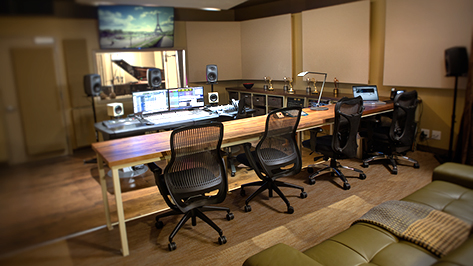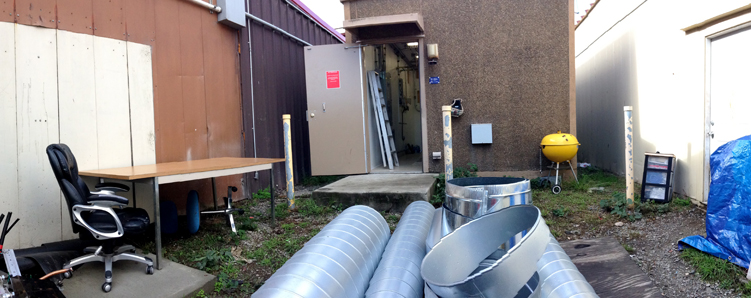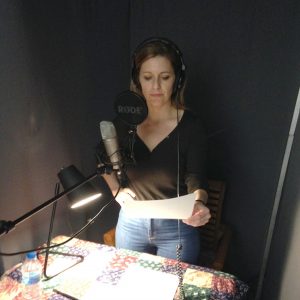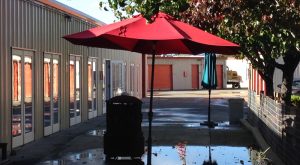1937 and 2018. Two creative communities, then and now. In the next post Paul finds a creative home in the London atelier of the man who become his mentor, László Moholy Nagy. I discover one in Richmond, California.

Back in the day when I completed the final cut of a documentary film, I took the audio elements to a recording studio to edit and “sweeten” the sound. I would also record narration and secondary voice-overs in booths with the world’s most sophisticated microphones. This was a special moment in the long trajectory of completing a film. Sound engineers were high priests and wizards, and for a brief moment, one was given an audience with them. In the foyer there were movie posters and record albums framed in gold and silver. An assistant brought coffee and danishes. For a short time you were royalty. But you paid for it, sometimes hundreds of dollars per hour. Those were the days when I was working on funded projects for public television with an actual budget.
The Restless Hungarian documentary is an entirely different kettle of fish. I want to record actors and actresses doing the voices of various historical characters, but I live way out in the boondocks and the nearest available talent is in the Bay Area. So I resolved to come the talent and, through a serendipitous series of connections, created a radical new recording studio solution. Call it your basic third world recording bunker. It’s located in a distressed neighborhood, the San Pablo district of Richmond, California just east of the Richmond-San Rafael bridge. Vacant lots bisected by railroad tracks and filled with junk border on abandoned industrial buildings, cordoned off with razor wire.

My bunker is a former cell-phone tower base. It has no windows. It has concrete walls one foot thick which block the roar of the nearby freeway. The outdoor “foyer” is strewn with an assortment of old furniture, a stack of culvert pipe, telephone equipment racks, and a bright yellow Weber barbecue. To get to it you have to walk down a narrow, muddy alley between windowless buildings and go through wooden gate draped with laundry, while keeping your eyes open for dog turds.

I’ve built a little padded cave lined with audiomute blankets. Inside is a table with a lamp, a pile of scripts, and my Rode microphone. I worry that actors and actresses, expecting a plush studio, will be freaked out. So I will paint a picture, ahead of time, of my recoding bunker that is so cool that it doesn’t need to impress you. It has street cred.
There’s another angle which is, actually, really cool. I am renting my bunker from Bridge Storage and Art Space, a self-storage complex that’s been permitted and brought up to city code to become creative co-working spaces. Many artists have converted storage spaces into studios and there are communal spaces for woodworking, metalworking, and sewing, as well as an exhibition gallery. The workshops are not funky (unlike my bunker, which lies outside the main compound) but are beautifully maintained. You pay under $100 a month for access to all the communal spaces, stocked with state of the art tools. There are monthly screenings of filmmakers’ works-in-progress.
Did I mention there is also a film stage, complete with green screen and a black psyche? I heard about this place when my wife, Sharon, was looking for venues to stage an exhibition of her art masks. Bridge accepted her proposal and invited her to install a one-woman show, which was up for two months.

 The place is the brainchild of the owner, Jeff Wright who inherited it from his dad and decided to help out a few artist friends. Not many things make me wish I still lived in the Bay Area, but this is one of them.
The place is the brainchild of the owner, Jeff Wright who inherited it from his dad and decided to help out a few artist friends. Not many things make me wish I still lived in the Bay Area, but this is one of them.
It’s an oasis in the middle of an urban wasteland. It’s a real, unpretentious community of creative people who are sharing resources. I think it is what artists dream about, but rarely find. It has been great to be a part of it. Thank you Bridge Arts for the bunker and the memories.
In the post about Paul and László Moholy-Nagy there is a video of my father describing his first encounter with his mentor.